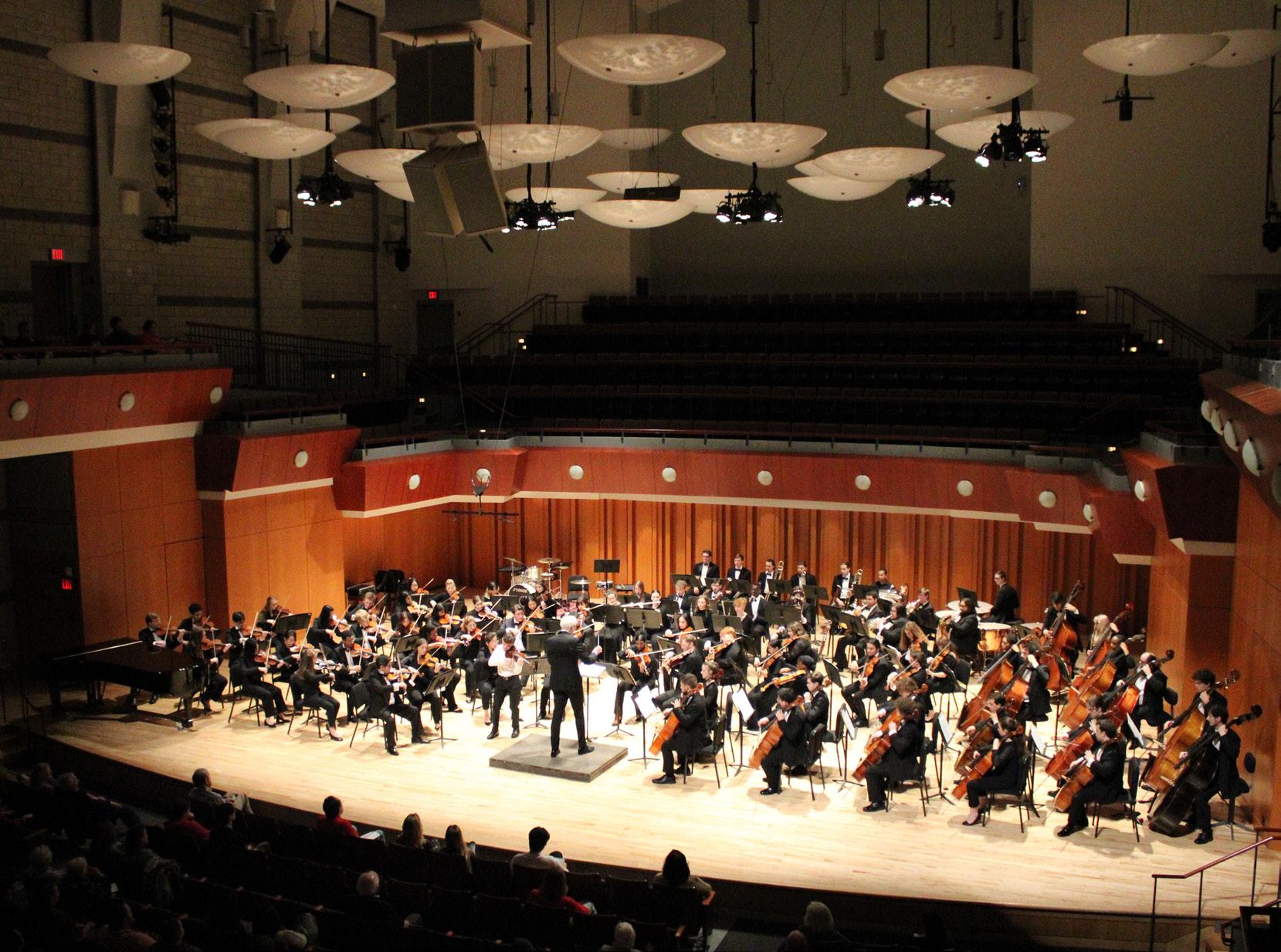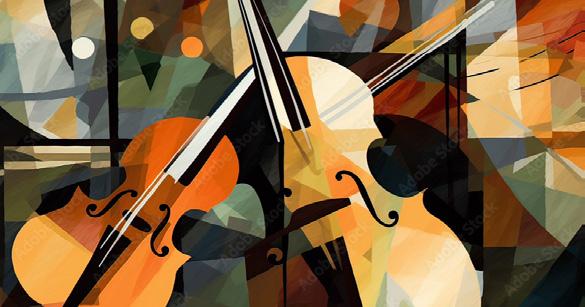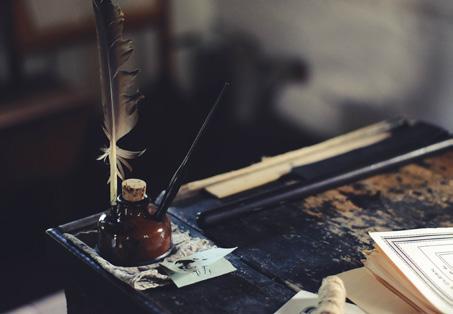UNIVERSITY OF GEORGIA SYMPHONY ORCHESTRA
Happy Birthday Anton
Bruckner
MARK CEDEL conductor

THURSDAY, FEBRUARY 22 at 7:30 p.m.
HODGSON CONCERT HALL
UGA PERFORMING ARTS CENTER 230 RIVER RD, ATHENS, GA


MARK CEDEL conductor

THURSDAY, FEBRUARY 22 at 7:30 p.m.
HODGSON CONCERT HALL
UGA PERFORMING ARTS CENTER 230 RIVER RD, ATHENS, GA

Thursday, February 22, 2024 at 7:30 p.m.
Hugh Hodgson Concert Hall
UGA Performing Arts Center
University of Georgia Symphony Orchestra
Mark Cedel, conductor
Nicholas Han, assistant conductor
A Midsummer Night’s Dream, incidental music, opus 21 & 61
Overture
Notturno
Scherzo
Wedding March
INTERMISSION
Symphony No. 4 in E-flat major, “Romantic”
Bewegt, nicht zu schnell
Andante quasi Allegretto
Scherzo: Bewegt – Trio: Nicht zu schnell. Keinesfalls schleppend
Finale: Bewegt, doch nicht zu schnell
Felix Mendelssohn
Anton BrucknerScored for: two flutes, two oboes, two clarinets, two bassoons, two horns, three trumpets, three trombones, ophicleide (tuba), cymbals, timpani, and strings. 30:00
Jakob Ludwig Felix Bartholdy, also known as Felix Mendelssohn, was a German composer, pianist, organist, and conductor during the early Romantic period. Born in Hamburg, on February 3 1809, to a very wealthy family, Mendelssohn grew up in an intellectual environment. The name Bartholdy was added at the suggestion of his mother’s brother, Jakob Salomon Bartholdy. Mendelssohn began his musical career by taking piano lessons from his mother at the age of six. He was to revive the interest in the music of Johann Sebastian Bach. At the end of his life, Mendelssohn suffered poor health from overworking, and distress from the death of his sister, Fanny Mendelssohn. On the November 4, 1847, at age 38, Mendelssohn died in Leipzig after a series of strokes.
What is interesting about this work is Mendelssohn composed the Overture 16 years before he wrote the remaining incidental music. In his publishing catalog, the Overture is opus 21, and his Incidental Music is opus 61. The Overture was written after Mendelssohn had read a German translation of the play in 1826. He was 17 years old when he finished the Overture, and 31 years old when he finished the Incidental Music.
Before going into Mendelssohn’s Midsummer Night’s Dream, what is incidental music?
Incidental music is music written to accompany or point up the action or mood of a dramatic performance on stage, film, radio, television, etc. Other examples include Beethoven’s music for J.W. von Goethe’s Egmont, Georges Bizet’s L’Arlésienne suite for Alphonse Daudet’s play, and Edvard Grieg’s Peer Gynt. Selections from Midsummer Night’s Dream are often performed in the form of the standard orchestral concert setting.
The Overture was premiered in Stettin, then in Prussia; now Szczecin, Poland, on February 20, 1827. For its time, it has a romantic atmosphere, where the music incorporates many classical elements. The map of this Overture is standard sonata form, where we have the exposition, development, and recapitulation. The Overture opens with the winds playing four opening chords, followed by the violin’s running eighth notes representing fairies darting through the woods. Leading to a fortissimo passage that then transitions into the second theme, that of lovers. We are then hit with pounding notes followed by what seems to be a donkey “heehawing” from the strings.
The Incidental Music premiered on October 14, 1843, at the King’s palace in Potsdam. We start the Incidental Music with the Notturno, with the horn and bassoons playing sweetly, with pulsing cello and basses. Then the violins come in, shedding a hope of light through the night. The main melody comes back, and underneath it, the strings pluck with a little hesitation, ending with a satisfying E Major chord. We then move onto the famous Scherzo, which serves as a standard excerpt for most all instruments in the orchestra. It starts with the chattering winds and dancing strings with uneasy accents. Just like the Overture, we feel the running notes scurrying across each section of the orchestra. Towards the end of the Scherzo, we hear running sixteenth notes from the flute, returning to the beginning theme. We are then
transported to the Wedding March, perhaps the most work ever composed by Mendelssohn. It starts with the 3 heralding trumpet, followed by the full orchestra.
Program Notes by Nicholas Han
Scored for: two flutes, two oboes, two clarinets, two bassoons, four horns, three trumpets, three trombones, tuba, timpani, and strings. 65:00
During the late 19th century, two romantic composers emerged as opposites, Brahms and Bruckner. Besides their differences, both were heavily influenced by Beethoven and Schubert, both composed symphonies later in their lives, and both held the firm belief in a 4-movement symphony when at the time, programmatic music was the popular genre. In terms of musical style, Bruckner’s composition technique sounds unique and distinctive.
Bruckner was born in Ansfelden, a village near Linz, in 1824. He started as a school teacher and as a local organist, who, just like Haydn, was a self-taught composer. He started his career as an organist at the St. Florian monastery, also near Linz, where he concentrated his composition mainly on choral music: masses, hymns, and motets. In 1863, Bruckner was introduced to the music of Richard Wagner by his teacher, Otto Kitzler. He was heavily inspired by Wagner’s compositions, and Bruckner accepted a position as a theory instructor at the Vienna Conservatory in 1868. His first ten years in Vienna were miserable, as he tried to get his orchestral works performed.
Bruckner had no more interest in Wagner’s view of the programmatic tradition, but still was inspired by his musical technique: the harmonies, orchestration, and the scale of musical structures. At the premier of Bruckner’s 3rd symphony, Bruckner was surprised to see his students in the audience applauding from the balcony.
The “Romantic” was dedicated to Prince Konstantin of Hohenlohe-Schillingsfurst and premiered in 1881 by Hans Richter in Vienna with the Vienna Philharmonic. The premiere of this symphony was a turning point in Bruckner’s career. It was written in 1874 and revised several times through 1888. Because of his perfectionist personality, he struggled and completely rewrote the last two movements in 1878, then rewrote the finale again in 1880. The nickname “Romantic” was used by the composer himself. Before going into this symphony, picture the whole orchestra as a pipe organ, and Bruckner sitting on the bench, getting ready to perform this monumental work.
The symphony has a four-movement classical structure: Fast-Slow-Scherzo-Fast. The first movement opens with the strings playing tremolos suggesting a “daybreak” with the E-flat horn call opening from the clouds. The winds then join in pushing the mist away and shining light to the stage. We are then shown the “Bruckner Rhythm” of a duple and triple figure, one-two, one-two-three. Keeping with romantic influences during the time, his lyrical second theme is based on a bird call, specifically the Kohlmeise, a European chickadee. At the climax of the movement, we get a massive brass chorale (trumpets, horns, trombones, and tuba), reminiscing the opening rhythm of the horn.
Bruckner describes the second movement as a “song, prayer, serenade.” One could say it has the character of a funeral march, alternating with echoes of a chorale. The sense of somberness by turning from a major to a minor key. The violas take the long melody while accompanied by pizzicato strings. The music gains momentum when the cellos take their turn, eventually transitioning to the extended coda building intensity to the climax before fading away.
Bruckner describes the third movement as “The Hunt-Scherzo”. This movement technically has an extended A-B-A structure, where the initial “A” section can also be seen as a 7-part rondo form. Again, starting with tremolo strings and evoking the triplet from the horns, giving a rustic energy and drive; this time, with a more major influence on happiness and pridefulness. Next, we hear a contrasting, more pastoral Trio section. Perhaps it’s Schubert’s influence on Bruckner, showing a more bucolic and rural side of the composer.
The Finale opens with a B-flat pedal, tremolos, and intertwining notes, helping set the mood for the falling notes from the woodwinds and horns. Some could hear Bruckner is using material from earlier themes and textures from earlier movements, including ominous textures, pastoral-like, lyrical, and solemn. Later in the movement, we hear the signature “Bruckner Rhythm” starting from the horns and trombones, transitioning to the whole orchestra playing in unison.
Program Notes by
Nicholas Han Photo by Easel Images
Photo by Easel Images
Carlos Brena, concertmaster
Molly Schneider, assistant concertmaster
Alexis Boylan
Jhonni Campos
Lyu Lian
Zeyu Yuan
Sarah Nienhiser
André Araújo de Souza
Sean Smith
Brian Roach
Adelmo Giménez
Lucas Nyman
Alicia Li
Ellis Kim
Simms Murray
Sarah Ling
Clarissa Tamara, principal
Sage Codispoti, assistant principal
Chelsea Afful
Kiera Johnson
Nicholas Olmstead
Shazan Samnani
Rebekah Kim
Rea Aiyer
Lauren McClary
Andreea Barca
Ranjani Vasudevan
Jen Edwards
Athziri Moreno-Martinez
Gianna DiMuzio
Eileen Chong
Mark Cedel, Conductor
Nicholas Han, Assistant Conductor
Bryan Johnson, principal
Nina Nagarajan, assistant principal
Kailey Ford, assistant principal
Jensi Perng
Anna Murphy
Jodie Stone
Mason Minutella
Daniel Boscan
Ashley Belcher
Clinton Stempien
Libby Zavadil
Seneca Fisher
Zachary Helms, principal
Gabriella McClellan, assistant principal
Thomas LaMon
Joshua Aderhold
Ian Koontz
Tristan Dempsey
Olivia Durrence
Charlton Hills
William Slater
Kemp McArthur
BASS
Daniel Pina, principal
Bianca Wilson, associate principal
Wueliton Zanelatto
Dal Pont, assistant principal
Austin Carter
Ricardo Karelisky
Jordan Askew
Madeleine Bower
Victor V. Costa
Yinzi Zhou, principal
Dylan Abbott
Rachel Lee, piccolo OBOE
Marissa Ankeny, principal
Gracee Myers
Xander Herman
Brenna Sexton
Sarah Christi, co-principal
Tan Charintranount, co-principal
BASSOON
JT Holdbrooks, principal
Caleb Jackson
Hsin Cheng, contra HORN
Anthony Parrish, principal
Joshua Wood
Marianna Schwark
Gracie Gambrell
Charles Dunn
TRUMPET
Victor Antanazio Pires, principal
Ramon Zamudio
Jake Landau
Toby Johnson
Danny Alford, principal
Benjamin Novo, assistant principal
Eli Boudreaux
Elizabeth Toles, bass trombone
TUBA
Hunter Kane
Patrick Sorah, principal
Euan Maley
William Collins
Thomas Huff
HARP
Isabel Hardy
Molly Schneider
Ricardo Karelisky Deho

Scholarships and Graduate assistantships funded by donations to the Thursday Scholarship Fund make it possible for students to learn and pursue their passions at the Hugh Hodgson School of Music. Please consider a tax-deductible gift to the Thursday Scholarship Fund so we may continue to support our students and make their education possible.
DIRECTOR’S CIRCLE: Gifts of all amounts are greatly appreciated. However, annual giving at the $1,500 level and higher provides membership in the Director’s Circle, our Hugh Hodgson School of Music Honor Roll. Director’s Circle members are invited to exclusive events and performances throughout the academic year.
CONCERT UNDERWRITING: If you are interested in underwriting a concert, please contact: Melissa Roberts at roberts@uga.edu or 706-254-2111.
Scan the QR code or visit music.uga.edu/giving to make a donation today to the University of Georgia Hugh Hodgson School of Music Scholarship Fund.
Thank you for your continued support of the UGA Hugh Hodgson School of Music.






TUES 2/27
7:30 p.m.
Hodgson Hall, UGA PAC
FREE CONCERT NO TICKETS REQUIRED
WED 2/28
4:30 p.m.
Edge Hall, School of Music
FREE CONCERT NO TICKETS REQUIRED
WED 2/28
7:30 p.m. Ramsey Hall, PAC
FREE CONCERT NO TICKETS REQUIRED
THUR 2/29
7:30 p.m. Dancz Center School of Music
FREE CONCERT NO TICKETS REQUIRED
FRI 3/1
7:30 p.m. Hodgson Hall
FREE CONCERT NO TICKETS REQUIRED
Celebrating the joy of raising our voices in song together.
UGA GLEE CLUBS BIPOC COMPOSERS

UGA VIOLA CHOIR PRESENTS
MICHAEL
VIOLIN
Leilehua Lanzilotti, Reena Ismail, Derrick Skye, Scott Joplin, among others...
HEALD VIOLIN
GUEST LOVROARTISTPERETIĆ GUITAR
Guitar Foundation of America Winner
MICHAEL MICHAEL
VIOLIN
GUEST ARTIST NICK ZOULEK SAXOPHONE
MICHAEL HEALD HEALD HEALD
Original compositions for voice, saxophonist, electronics, and chamber ensemble.
VIOLIN
This spring festival of the British Brass Band includes Shenandoah by Steven Verhelst, Fiesta! by Peter Graham, NobodyDoesItBetter by Carly Simon and arranged by Dorothy Gates, Quicksilver by Peter Graham, So Glad! by William Himes and features soloists from within the ensemble.

